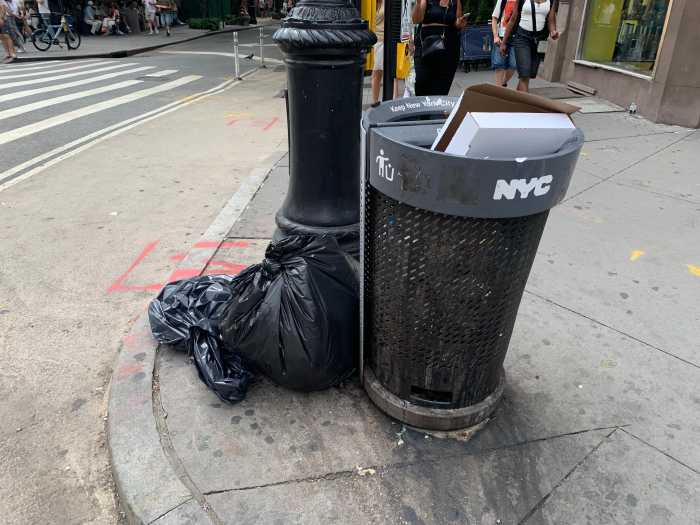As it seems to do yearly, the Meat Market has undergone another transformation. This time, the most noticeable new ingredients are the High Line park and the Standard Hotel, which spans the High Line between 13th and Little W. 12th Sts. These two projects — the High Line, in particular, which is attracting thousands of visitors daily — have brought new life to the area along Washington St..
Partly thanks to all the new foot traffic in the area from the High Line, the Meat Market is weathering the recession better than most commercial areas. However, while High Line-goers are stopping in at local boutiques, anecdotal reports are that only about 50 percent are actually making purchases; admittedly, the Meat Market’s price point is a bit high. On the other hand, restaurants are reporting that business is definitely up.
The number of meat businesses continued to contract over the past year, with less than 10 meatpackers left, almost all of them in the city-owned co-op building, where they have six years left on their lease.
Over the past 10 years, the five-block area — first slowly, then increasingly rapidly — has morphed into a nightlife, dining and shopping district.
While the meat businesses have largely vanished, the creation of the landmarked Gansevoort Historic District several years ago was key in preserving the neighborhood’s essential character.
Speaking of history, amid all the change, it’s nice to see that the operators of the Gansevoort St. Cafe, set to open in three weeks, are trying to retain the “spirit” and “karma,” as they put it, of the former Florent restaurant. This will not be easy, as Florent Morellet’s loving and manic imprint on the space was so profound. The new place will have white “subway tiles” on the walls, a zinc bar where Florent’s use to be, though a bit shorter, American comfort food — and, most important in the view of many, will keep the stainless-steel front paneling and the “Restaurant” of the exterior sign, and possibly even the “R & L,” too.
Similarly, the late Robert Isabell was taking a tasteful and contextual approach with two Meat Market buildings. At one, at 13th and Washington Sts., he had recently planted the classic overhang roof with colorful flowers. More than a year ago, Isabell had been planning a Charlie Chaplin museum and movie theater there to show classic silent films. Though the idea never materialized, it’s the sort of interesting attraction the Meat Market could use more of.
The plaza pilot project along Ninth Ave. and in Gansevoort Plaza needs some tweaking. Local businesses want fewer restrictions on where cars can drive, since their well-dressed patrons don’t want to have to walk any distance to get to their venues, much less to do so in bad weather. Yes, the bollards, granite blocks and planters out there do look a little thrown together. But the concept is sound — to slow down cars going through the Meat Market, making it safer for everyone.
It was hoped a Meatpacking District business improvement district would fund these plaza spaces’ upkeep, but that BID hasn’t yet materialized. Hopefully, the Department of Transportation and Community Board 2 can fine-tune the plaza spaces — though, again, what’s there now is basically the right idea.
We’re very encouraged by some of the most recent changes — of course, particularly the High Line and, yes, also the Ninth Ave. plaza areas. There’s no doubt the Meat Market will continue to change, again probably in ways we couldn’t have foreseen. The landmarking of the neighborhood, however, was key, and is, ironically, what has ensured it remains a unique and vital area, characterized by its mostly low-rise architecture and connected to its historical context.





































